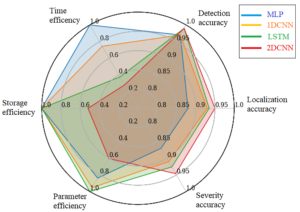by Hung Dang, Fellow Research , LDTRC

As part of the project activity funded by the Newton Fund Institutional Links through the U.K. Department of Business, Energy, and Industrial Strategy and managed by the British Council under Grant 429715093, Research paper “Deep Learning-Based Detection of Structural Damage Using Time-Series Data” was accepted for publication in Q1 journal “Structure and Infrastructure Engineering” in July 2020.
As the construction process is becoming more and more digitalized with the help of digital design packages such as 3D computer aid design (CAD), building information modeling (BIM), Finite element analysis (FEA), the Digital Twin emerges as one of the most exciting technologies which create a high-fidelity digital entity evolving synchronously with the real structures throughout their entire life cycle. Thus, the monitoring service evolves from periodical, generic, and physical law-based models to real-time, personalized, and data-driven ones, thus optimizing maintenance strategy, increasing reliability and safety of the structure, and extending its remaining service life.
This study developed a modulated workflow flexible in switching different Deep Learning algorithms and fusing data from multiple sensors, thus enabling to 1) compare the practical effectiveness of various DL algorithms, 2) perform multiple structural damage detection tasks such as damage localization, damage severity, and 3) handle time-series data polluted by noises through the noise injection learning method.

Deep neural network-based models are alternative and complementary methods directly using measured vibrational signals without requiring an additional step to extract structural characteristics such as modal identification. Moreover, it is flexible to conduct different damage detection tasks with the same neural network architecture but the last output layer to be fine-tuned per task. Once the models are trained with appropriate datasets and their parameters are stably determined, they could deliver monitoring assessment in a near real-time fashion due to the fast inference time.

[1] Vasco de Gama bridge, https://arab-trip.com/wp-content/uploads/2019/07

